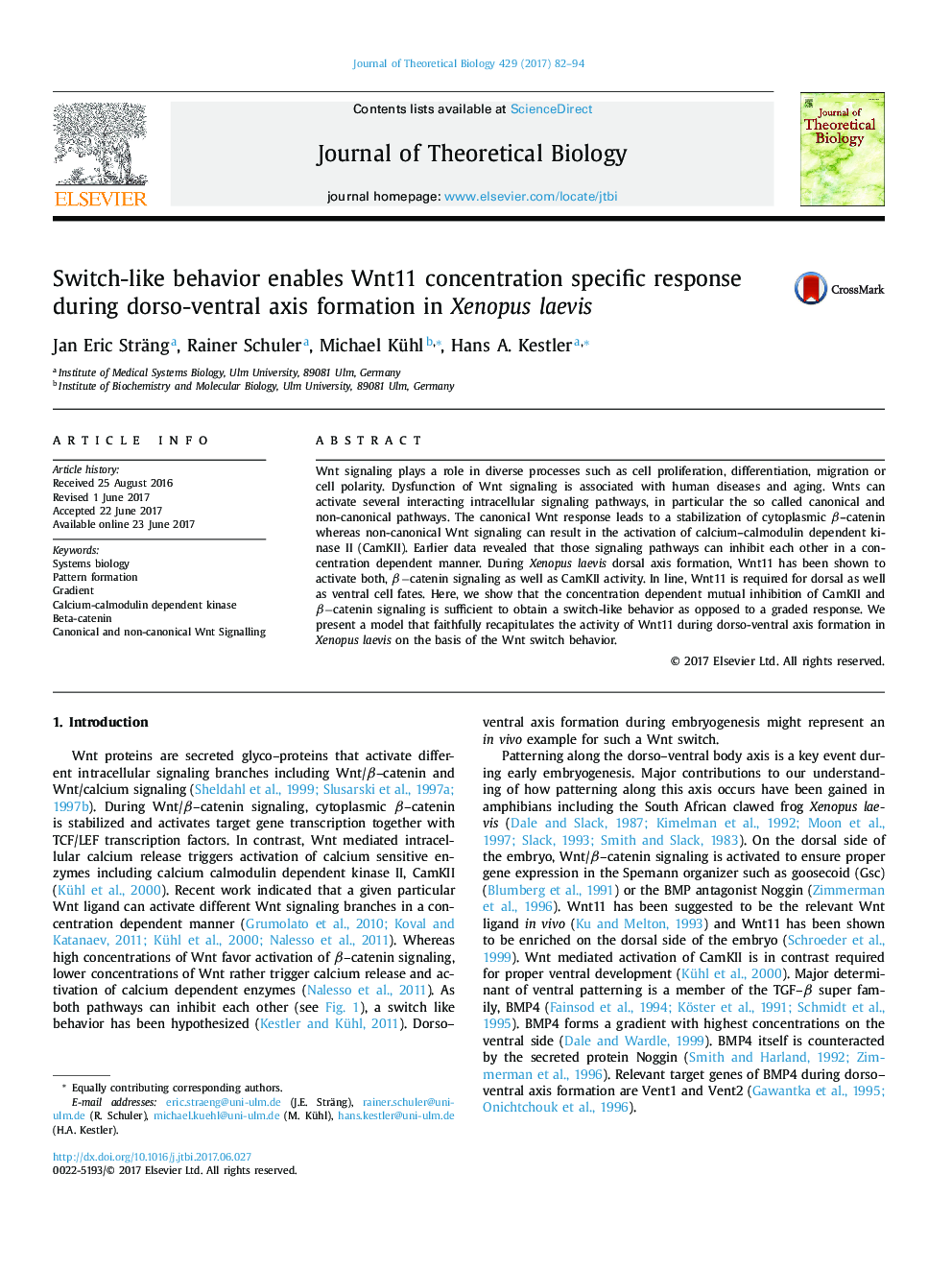| Article ID | Journal | Published Year | Pages | File Type |
|---|---|---|---|---|
| 5759967 | Journal of Theoretical Biology | 2017 | 13 Pages |
Abstract
Wnt signaling plays a role in diverse processes such as cell proliferation, differentiation, migration or cell polarity. Dysfunction of Wnt signaling is associated with human diseases and aging. Wnts can activate several interacting intracellular signaling pathways, in particular the so called canonical and non-canonical pathways. The canonical Wnt response leads to a stabilization of cytoplasmic β-catenin whereas non-canonical Wnt signaling can result in the activation of calcium-calmodulin dependent kinase II (CamKII). Earlier data revealed that those signaling pathways can inhibit each other in a concentration dependent manner. During Xenopus laevis dorsal axis formation, Wnt11 has been shown to activate both, βâcatenin signaling as well as CamKII activity. In line, Wnt11 is required for dorsal as well as ventral cell fates. Here, we show that the concentration dependent mutual inhibition of CamKII and βâcatenin signaling is sufficient to obtain a switch-like behavior as opposed to a graded response. We present a model that faithfully recapitulates the activity of Wnt11 during dorso-ventral axis formation in Xenopus laevis on the basis of the Wnt switch behavior.
Related Topics
Life Sciences
Agricultural and Biological Sciences
Agricultural and Biological Sciences (General)
Authors
Jan Eric Sträng, Rainer Schuler, Michael Kühl, Hans A. Kestler,
